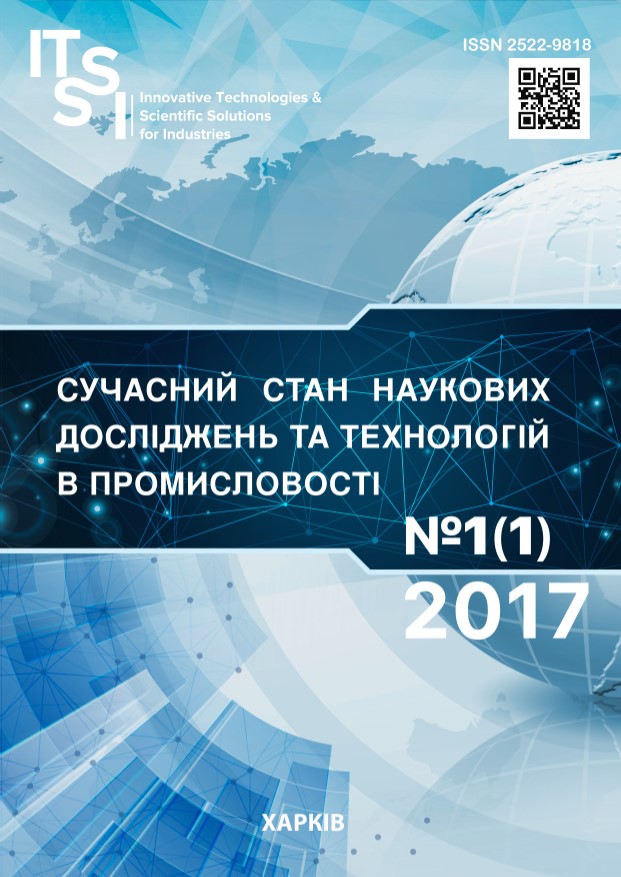GENERAL PRINCIPLES OF BUILDING THE MODEL OF DEVELOPMENT AND OPERATION OF HETEROGENEOUS TEAMS FOR PROJECT MANAGEMENT
DOI:
https://doi.org/10.30837/2522-9818.2017.1.021Keywords:
software, the model of management, sociometry, individual indexes, Hungarian methodAbstract
The subject of the research is the basic principles of making the model of managing the production of software and models of development and operation of heterogeneous teams for project management. The objective of the research is to develop the mathematical model representing the operation of heterogeneous teams for project management. The sociometry is used for psychodiagnostic procedures in the course of social and psychological analysis of group relations. This method is directed at determining the structure of interpersonal relations by identifying mutual feelings of frienliness and unfrienliness among the members of groups. The mathematical methods of processing data and information obtained during the sociometric survey lie in calculating mathematical indicators which can be subdivided into group and individual indexes. In the course of the research the following taskswere solved: the requirements for team building and development of models for software implementation were analyzed; the method for analyzing the cohesion of team members was selected; the options for developing the mathematical model representing the principles of building the team which works on the project were considered. Groups different in structure were compared with the help of mathematical processing of statistical data; and correlation procedures were conducted. Individual indexes were defined; among them are: the index of sociometric status which indicates the advantage of any member of the group over other participants; the indexes of positive and negative emotional expansivity; the index of group cohesion; the index of sociometric coherence. The methods used are: statistical and correlation analysis, sociological, Hungarian, mathematical. As a result of the conducted researches the basic principles of making the model of managing software development are shown, mathematical methods of development and operation of heterogeneous teams for project management are suggested. Thus, the goals and objectives of the research are carried out.References
Belbin, R. (1996), Roles in the team. Trans. from Eng., 200 p.
Mintsberg, G., Kapturevsky, N. N. (ed.) (2004), The structure in the fist: the creation of an effective organization. Trans. from Eng., Peter Silt (Series "Business bestseller"), St. Petersbur, 512 p.
Belbin, R. (2003), Types of roles in teams of managers. Transl. from Eng., Hippo, Moscow, 216 p. ISBN 978-5-9900887-5-7.
Bazarova, T. Yu. (ed.), Eremina, B. L. (ed.) (2002), Personnel Management: Textbook for high schools, 2nd ed., UNITY, Moscow, 560 p. ISBN 5-238-00290-4.
Barker, A. (2002), How it is even better to manage people, FAIR Press, Moscow, 126 p.
Volkova, Yu. G. (ed.) (2003), Sociology: Textbook, 2nd ed., Gardariki, Moscow, 200 p.
Mazur, I. I, Shapiro, V. D., Olderogge, N. G. (2004), Project management: textbook allowance, Omega-L Kiev, 405 p.
Gubko, M. V, Novikov, D. A (2002), Theory of games in the management of organizational systems, Sinteg, Moscow, 227 p.
Haritovnov, V. N (2008), "Formation of the project team for the reconstruction of the system of thermal expansion", Vesnik Engineering Academy of Ukraine, No. 3-4, pp. 263.
Burkov, V. N., Novikov, D. A. (1997), How to manage projects, Synteg, Moscow, 230 p.
Ryko, A. S. (2005), Models and methods of system analysis: decision making and optimization, MISIS, Moscow, 139 p.
Novikov, D. A., Chkhartishvili, A. (2003), Reflective games, Sinteg, Moscow, 190 p.
Novikov, D. A. (2007), Project Management: Organizational Mechanisms, PMSOFT, Moscow, 125 p.
Venttsel, E. (1972), Investigation of operations, Soviet radio, Moscow, 370 p.
Markovskaya, I. M (1999), Sociometric Methods in Psychologists: Textbook, Publishing House of South Ural State University, Chelyabinsk, 46 p.
Moreno, Ya. L. (1958), Sociometry, The World, Moscow, 98 p.
Raygorodsky, D. Ya. (1998), Practical psychodiagnostics. Methods and tests: Textbook, Publishing House "Bakhrakh", Samara, 672 p. ISBN 5-89570-005-5.
"Hungarian method of solving tasks about assignments", available at: https://math.semestr.ru/nazn/venger.php.
Downloads
How to Cite
Issue
Section
License
Copyright (c) 2018 Valeriy Gurin, Elena Persiyanova

This work is licensed under a Creative Commons Attribution-NonCommercial-ShareAlike 4.0 International License.
Our journal abides by the Creative Commons copyright rights and permissions for open access journals.
Authors who publish with this journal agree to the following terms:
Authors hold the copyright without restrictions and grant the journal right of first publication with the work simultaneously licensed under a Creative Commons Attribution-NonCommercial-ShareAlike 4.0 International License (CC BY-NC-SA 4.0) that allows others to share the work with an acknowledgment of the work's authorship and initial publication in this journal.
Authors are able to enter into separate, additional contractual arrangements for the non-commercial and non-exclusive distribution of the journal's published version of the work (e.g., post it to an institutional repository or publish it in a book), with an acknowledgment of its initial publication in this journal.
Authors are permitted and encouraged to post their published work online (e.g., in institutional repositories or on their website) as it can lead to productive exchanges, as well as earlier and greater citation of published work.














